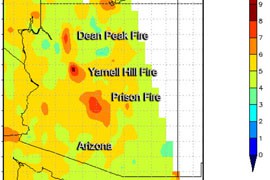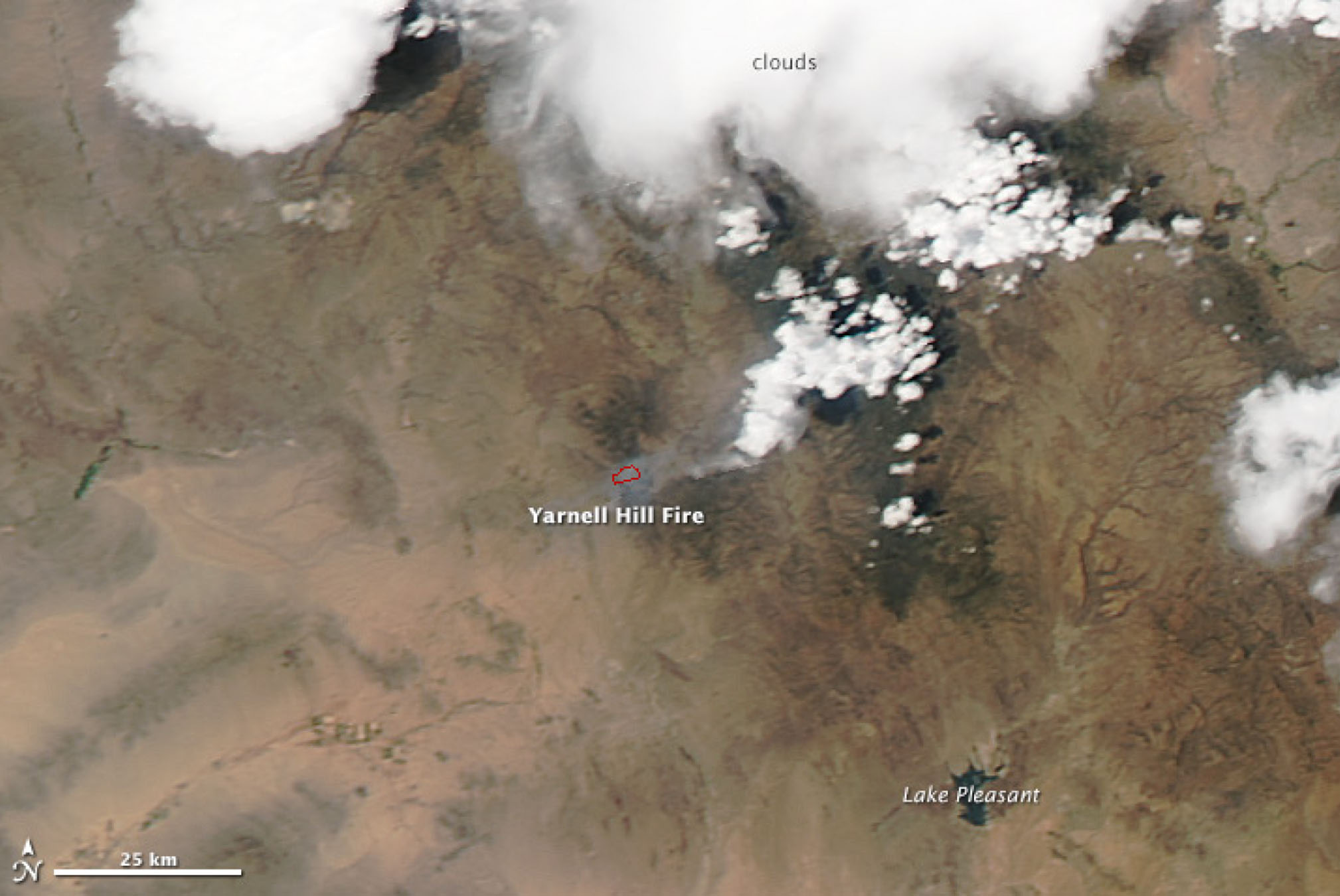Cronkite News has moved to a new home at cronkitenews.azpbs.org. Use this site to search archives from 2011 to May 2015. You can search the new site for current stories.
NASA: Climate change makes this year’s wildfire season the ‘new normal’
WASHINGTON – Climate change, and the consistently hotter and drier weather that comes with it, is largely the cause of the recent “sharp increase” in the number and intensity of wildfires, NASA officials said Friday.
NASA and U.S. Forest Service officials, who have been using satellites to analyze weather patterns and better predict each wildfire season, said the new pattern is likely here to stay.
This is the “new normal,” said Doug Morton, research scientist at NASA’s Goddard Space Flight Center in Maryland. We need to be “planning for a warmer and drier future.”
As of Aug. 5 there had been 1,264 wildfires reported in Arizona and 91,742 total acres burned this year.
That is well below the number of acres burned in other Western states, such as Colorado, Idaho and California, according to the National Interagency Fire Center.
But while Arizona’s fire season has been relatively normal in terms of size, it has been historic in terms of lives lost. Twenty-nine people have been killed battling wildfires nationwide this year, with 19 of those victims being the Granite Mountain hotshots who were killed June 30 in the Yarnell Hill fire.
Elizabeth Reinhardt, assistant director of fire and aviation management for the U.S. Forest Service, said the satellites, which have been orbiting Earth for the past three decades, have helped with preparedness for wildfire season.
She said the three factors that really contribute to wildfires are topography, weather and fuel. The satellites have “helped with firefighter placement,” Reinhardt said.
Morton said that when the satellites find new fires, they transmit that information to local fire officials by text message within 30 minutes of a flyover. The satellites do this all over the world.
Morton also said that by gauging temperatures around the world, scientists can make projections months before actual fires start.
NASA and Forest Service officials – who gathered in an online news conference Friday – said that despite this year’s wildfire season being particularly deadly in Arizona, it is otherwise shaping up to be an “average” year in terms of numbers of fires and acres burned in the state.
The National Interagency Fire Center also said the Arizona numbers are well below those from 2012, which was a particularly dry year, when there were a reported 1,684 fires and 216,090 acres burned.
Reinhardt said that wildfire season began getting longer and more intense about 25 years ago. Before that, during the post-World War II era, it was relatively calm.
“That (post-World War II) reduction was partially due to our increased capabilities to suppress fires, it was partially due also to the fact that those happened to be relatively cool, wet decades,” Reinhardt said.
But the future is likely to bring not only a “warmer West, but a drier West and that definitely translates into a more fiery West,” said Bill Patzert, research scientist at NASA’s Jet Propulsion Laboratory in California.
As more “people move into harm’s way of these fires, it becomes a serious problem,” Patzert added. “Weather can get you a break, but in the long run it’s going to get you.”








